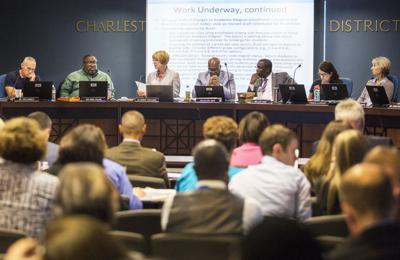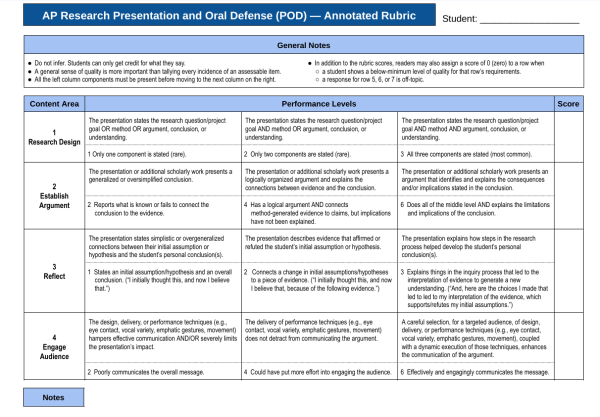Change Is Coming: What’s Going on with Magnet Admissions?
Two weeks ago on October 15th, the Post and Courier reported on a proposed new admission policy for incoming freshmen at the Academic Magnet which has since stirred controversy within Magnet and throughout the greater Charleston area. While many worry that the proposal will disadvantage their children’s chances to get in, others hail the move as the first suitable solution for Magnet’s diversity problem since it began in the early days of the recession.
On Wednesday, Dr. Gerrita Postlewait, superintendent of CCSD, held an information meeting at AMHS on the 19 proposals being submitted to the school board related to Academic Magnet admissions. One CCSD administrator pointed out that when AMHS first achieved a US News Top 10 ranking, the school demographics were roughly 60% white and 40% minorities (This number has been refuted by Magnet teachers, who say it was likely closer to 70% white to 30% African American). What they wanted to emphasize, however, was the socioeconomic diversity of the school, which was much greater than current numbers.
The initial proposal for new admissions involved two steps, the first being a continuation of the Top Two program in which the top two ranked students from each middle school are admitted to the school, with one major change from the 2016 version of the program. Whereas formerly, the two students were still required to meet Magnet admission criteria (meaning a score near or above 13 on Magnet’s 15 point rubric), under this proposal, they would be automatically accepted, without such requirements. The second step was to facilitate acceptance based on several tiers of priority, with those coming from high poverty index schools ranking highly, and applicants from outside of Charleston County coming lowest in priority.
The most recent proposal requires all students to get at least an eleven on a new 14 point scale. The updated rubric will have one point for coming from an accredited school within Charleston County, whether it be a public, private, or a home school. This mechanism is designed to emphasize AMHS’ position as “the crown jewel of CCSD,” not the whole tri-county area. That said, students from Berkeley and Dorchester counties could still get in, though they would likely need to get as close to a thirteen as possible on the scale. This plan was not part of the 19 recommendations submitted to the board on Monday, November 11th, however. While one of the recommendations will be for the board to consider developments to admissions based on recent research and findings, the primary purpose of the other points involves strengthening the pipeline into Magnet.

Further, the new rubric takes emphasis off of teacher recommendations, reducing them from being worth up to three points to just one point for a good recommendation. The defense here is that teachers are too subjective and possibly biased towards certain students. Dr. Postlewait argued that, statistically, teachers are among the worst judges of giftedness, adding that “Albert Einstein wouldn’t have made it into Buist.” One magnet student, Sammy Rosenberg, spoke up during the meeting to voice his concern about the removal of recommendations, as they represent the only part of the application where other important qualities of Magnet students, beyond grades, can be reported on. Sammy shared the importance of strong character and intrinsic work ethic to not only the student’s success but also for the environment that makes Magnet unique. Overall, many feel that the ramifications this significant gap in qualitative data will create has not been fully considered. By only analyzing traits such as test scores, GPA, essays, and income (more on that in a minute), the new admissions process is exactly what we don’t want the school to be: homogenous. Just as we need cultural, socioeconomic, and intellectual diversity, our admissions process needs diversity as well. Therefore, if the choice is to de-emphasize teacher recommendations, they should augment the process with something in the area of admissions interviews, which is no doubt more strain on AMHS personnel.
Another point of contention in the informational meeting held on Wednesday was the effects on out of district students, specifically, those on Daniel Island, who often take advantage of a 57 year old loophole which that allows their attendance at CCSD schools if the student (not his/her parents) owns property within the county that has a tax assessed value of $300 or more. These families must also pay $6,812 in tuition. The law, originally conceived in 1962 (during South Carolina’s infamous resistance to school integration), primarily affected African American students who were forced to pay tuition to schools they already attended. In recent years, however, the law is more commonly used by students from Berkeley and Dorchester couniesy who wish to attend CCSD magnet schools, in particular, SOA and Academic Magnet. According to the Post and Courier, out of the 40 students who utilized this loophole in 2018, 34 came from zip codes associated with Daniel Island and Cainhoy, with household incomes averaging around $100,000, double the state average. Ultimately, the only benefactors of this law are wealthy families who are able to buy their way past the already high performing schools in their area. Daniel Island high schoolers, for example, have the options of Philip Simmons and Bishop England, whereas many students within the district, do not have the opportunity to go to adequately performing schools if they are denied entrance into Magnet.
The proposal also directly targets those in middle schools with a poverty index of 80 or higher (of which there are 9 in the county currently), allocating up to 30% of seats to students in these schools that apply and reach the minimum score of 11 on the rubric. However, the current estimate is that these students may only account for about thirty seats, due to the low application rates and test scores from these areas. A current estimate predicts that only about 16% of seats able to be filled in this manner.
The school board, among many others, feel the students at these schools have significantly lower exposure to material at their grade level than those in private, parochial, or even higher income public schools such as Buist, Laing, or Moultrie. Dr. Postlewait voiced the opinion that if there are students from such disadvantaged schools who are able to test simply at their own grade level while being taught well below it, they should, in a way, be given the benefit of the doubt about their potential for good performance when exposed to high material. She argued that those types of students who overcome their circumstances in every way “must be extraordinary,” and Magnet can be the place for them to thrive, given that they get an equal playing field in the high school application process.
The most obvious solution for long term growth is strengthening CCSD schools and educational programs across the board. While lower-income schools may not be able to fill 30% of the school at this point, it is in everyone’s best interest to work towards that. One of Dr. Postlewait’s key points was how behind we’ve gotten in preparing low-income students, saying in part, “It’s unacceptable that we’ve let it get to this point, and we’re trying to find a fair start.” While fair is hard to define, equity is a necessary goal.
An essential step in bridging this gap is strengthening programs like the Advancing Charleston Excellence (ACE) Program. Funded by a one-time $100,000 grant from the Jack Kent Cooke Foundation to target the brightest minds from lower-income backgrounds, ACE has already brought a lot of awareness to AMHS from schools with historically weaker pipelines to the school. However, it is crucial that these programs are continued once the grant runs out.
The superintendent reflected that the sentiment that the focus of changes made should be strengthening the road to the school for those disadvantaged from birth by economic and other factors. The attention needs to be on bringing equity to elementary and middle schools first. If there is focus on the earlier rungs on the CCSD ladder, then not as many changes will need to be made to Magnet itself given the applicant pool itself will be more socioeconomically, racially, intellectually, and culturally diverse.
Update (11/12/19): At the school board meeting on Monday the 11th, the board voted to delay the vote on changes to Academic Magnet’s admission proposals. There were protests outside of the meeting with teachers and parents carrying signs with slogans such as “Do Your Homework” and “Delay the Vote”. Whether these were directed at the Academic Magnet changes is unverified, however.












